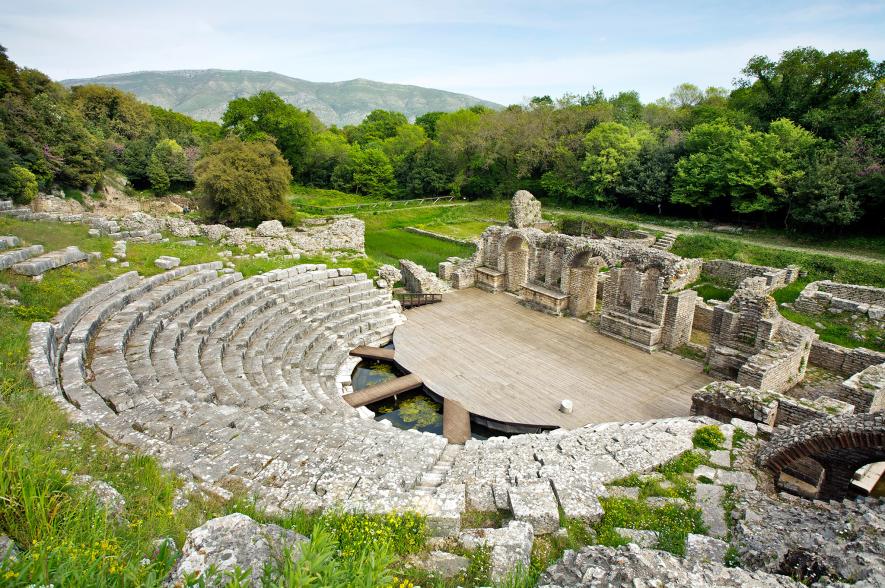TIRANA, January 5
National Geographic presents a list of ten surprising destinations that are slightly off the beaten path for most of the travellers and both Albania and Kosovo are part of it. This is not an article written by Invest in Albania. The original article was written by Tara Isabella Burton and it can be found here . The other countries in the list are Armenia, Nicaragua, Nepal, Iran, Uzbekistan, Timor-Leste, Georgia, and Tunisia.
ALBANIA

The Situation on the Ground: For decades, Albania was among southeastern Europe’s least visited and least accessible countries. A virtual fortress under the isolationist tactics of communist dictator Enver Hoxha (who spent four decades building over 700,000 needless, and largely useless, defensive bunkers across the country), Albania collapsed into chaos after Hoxha’s death in 1985 and the subsequent fall of the U.S.S.R.
Today, however, Albania is no less safe than its more well-trodden Adriatic counterparts. A burgeoning tourist industry centred around its meticulously preserved UNESCO-listed Ottoman towns, including Berat and Gjirokastra, and the stretch of land now known somewhat archly as the Albanian Riviera now brings in almost 3.5 million tourists a year.
Why Go Now: While Adriatic beaches in nearby Italy and Croatia have largely been transformed into crowded, hypermodern resort complexes, Albania’s coastal beaches, dotted with ruined Greco-Roman amphitheatres and whitewashed, icon-filled Orthodox churches, are among the few in Europe where it’s possible to stretch out on the shoreline, even during high season. South of Vlora, the somewhat concrete-feeling coastal hub, ethnically Greek villages like Dhermi, Vuno, and Himara with terrace cafés, waterside squid-hawking fishmongers, and narrow pedestrianized pathways—are inundated with family-run B&Bs that go for as little as $25 a night. Travelers from outside the Balkans are still rare but vigorously welcomed. Don’t be surprised if your B&B host insists on taking you on a dizzying motorcycle tour along the coastline or challenges you to a staggering rakia-drinking competition.
Don’t Miss: Albania’s relative lack of development has been a boon to its UNESCO World Heritage sites, among them the gargantuan, sprawling complex of Butrint, one of the most expansive, best preserved Greco-Roman cities in Europe. A 20-minute bus ride from the coastal city of Saranda, near Albania’s Greek border, Butrint feels like Ephesus via Indiana Jones: a virtually deserted, largely uncordoned collection of amphitheatres and colonnades, early Christian baptisteries, Byzantine basilicas, and Roman mosaics. Halfway between Saranda and Butrint, stop at the beach hut-style restaurant of Albiori in Ksamil village, where a local family dishes up garlicky shrimp by the bucketful, the perfect stopover for a scenic lunch.
Practical Tip: Despite an ostensibly comprehensive bus system, almost nothing in Albania runs when the online schedule says it will. Forego printed schedules by the major bus companies and embrace the anarchic, sweaty culture of the furgon–or shared minibus, especially south of Vlora. These white vans, which travel with vague regularity along a fixed route, picking up and dropping off passengers at will along the way, may not run to time, but there’s almost always one heading near where you want to go. In the meantime, sit at one of the country’s ubiquitous station-side cafés for a staggeringly strong Albanian coffee (don’t call it “Turkish” unless you’re prepared for vociferous debate) and learn to interpret the world-weary shrug that means “it’ll get here sooner or later.”
KOSOVO
Ski slopes in Brezovica, Kosovo
PHOTOGRAPH BY BENNY ISLAMI, THE NEW YORK TIMES/REDUX
The Situation on the Ground: Europe’s newest country (it only declared independence in 2008) hasn’t exactly been a mainstay on the tourist trail. A site both of violent conflict and political tension between ethnic Serbs and Albanian Kosovars throughout the 1980s and 90s, culminating in the Kosovo War of 1998-89, Kosovo spent almost a decade as a UN protectorate. Today, however, the newly independent Kosovo is one of Europe’s most exciting and economical adventure travel destinations.
Why Go Now: While much has been written about the thriving café culture of Pristina, Kosovo’s relentlessly bohemian, if aesthetically dreary, capital, Kosovo’s real draw is in the country’s south. The medieval city of Prizren a castle-topped hill town of Ottoman hammams and 14th-century basilicas—is a perfect base from which to hike (or ski) in Kosovo’s Shar Mountains, or to simply wander the city’s forested riverside behind the fortress hill. Well-preserved, without the sterility of renovated “old towns” in Balkan neighbors like Sarajevo, Prizren’s easily walkable historic district is a labyrinth of terra-cotta roofs, minarets, and red-umbrella-roofed cafés.
Don’t Miss: Negotiate if you don’t speak Albanian, many younger Kosovars speak some English and older generations in the region speak at least a smattering of German for a vertiginous hourlong taxi ride (about $20) from Prizren into Brod, an overgrown village of stone houses (and a single bakery) in the heart of the Shar Mountains. The heartland of the equestrian Gorani people (the village is said to have more horses than cars), Brod may not have much in the way of hotels (a taciturn old man named Biligap, discoverable by asking around, rents his somewhat dusty second home to travelers at $20 a bed), but somewhat impetuous horses (and guides, which are highly recommended) are easy to rent. The hiking and riding trails around Brod vary by the season from wildly green to crisply golden.
If roughing it doesn’t appeal, the incongruous chalet-style Hotel Arxhena is a 40-minute walk or a 10-minute drive into the mountains. It offers a resort-style experience, complete with access to ski slopes from $43, and an inexplicable flock of live garden peacocks.
Practical Tip: While off-grid hiking remains one of Kosovo’s most powerful draws, be careful not to wander too far afield. Like much of the Balkans, Kosovo’s wilderness is still home to some extant and active war-era land mines, particularly along the Kosovo-Albania border. Don’t head off marked paths alone.


Leave a Reply
You must be logged in to post a comment.